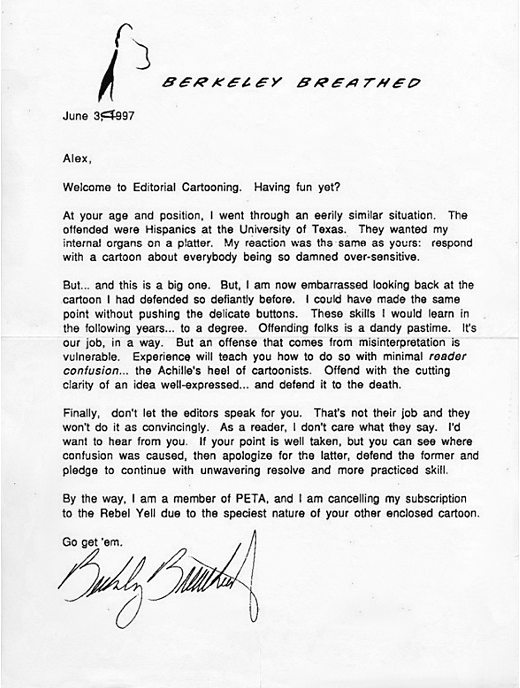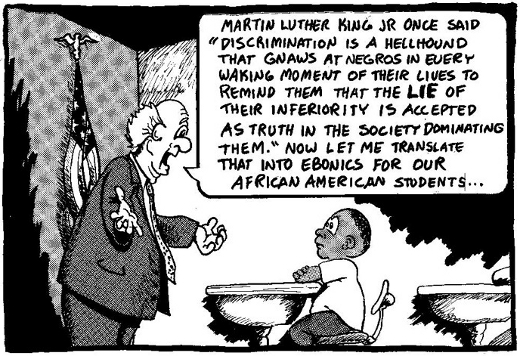Creative Courage is a workshop designed to demystify the idea of the individual and group creative process and discuss creativity as a necessary problem-solving skill. Creator Alex Raffi believes if people realize the creative process is not exclusive and is readily available to anyone willing to use it, the wall keeping them from tapping their creativity will eventually crumble.
As people get older, they generally tend to discourage themselves from reaching their full potential because they are afraid to fail. A need to place value on results and to compare accomplishments to those of others arises. Creative Courage fights these demotivating factors and encourages people to harness the creativity they once had as children and use it in their business and personal lives.
Thursday, March 28, 2013
Friday, March 15, 2013
Drawing with numbers
This is a little simple drawing lesson I developed for kids. Feel free to share with your little ones. If they like it share the pictures with me. :)
Thursday, March 14, 2013
The Creative Journey is more amazing than the destination.
Wednesday, March 13, 2013
13 lessons I've learned on how to have a productive discovery meeting
Here are 13 lessons I've learned over the years about how to have a productive discovery meeting with a client. It's during these meetings that we develop our understanding of our client and build strategy.
1) Pay close attention to body language throughout the meeting. It lets you know how much you may need to elaborate on a question or move on to other topics.
2) Establish trust by showing you are making an effort to really understand their needs early on.
3) Try not to ask generic questions. Build your questions based on previous answers. Progressive questions will lead you to a better understanding of needs.
4) Try to find easier ways to illustrate ideas presented by the client through metaphor or personal anecdotes. It will show a true want for a deeper understanding and also allow you to know if you are on point.
5) Really show them who you are during the meeting. Be yourself.
6) Don't be afraid to ask "dumb" questions. We tend to ask questions based on an initial intellectual need. It may help to elaborate after the answer is given on why the question was relevant to you and what you learned from the answer.
7) Remember you are the "expert," so be confident and share some industry wisdom.
8) Remember that you are discussing a topic that is deeply personal to the client, so act accordingly.
9) There is always a hidden truth that will teach you something really valuable. If you don't know that truth, you must dig deeper.
10) Remember that it is a process. If you don't feel you've found what you are looking for in the allotted time, schedule a new meeting.
11) At some point, explain to the client an idea or thought given to you by the client. The hope is that the client will begin to think in terms of marketing. This will make the relationship more valuable and effective.
12) The best way to impress a client during a discovery meeting is to show you were paying attention. Make sure they see that you have been.
13) And most importantly, after the meeting, do what you said you were going to do. It's much easier to lose integrity than build it.
2) Establish trust by showing you are making an effort to really understand their needs early on.
3) Try not to ask generic questions. Build your questions based on previous answers. Progressive questions will lead you to a better understanding of needs.
4) Try to find easier ways to illustrate ideas presented by the client through metaphor or personal anecdotes. It will show a true want for a deeper understanding and also allow you to know if you are on point.
5) Really show them who you are during the meeting. Be yourself.
6) Don't be afraid to ask "dumb" questions. We tend to ask questions based on an initial intellectual need. It may help to elaborate after the answer is given on why the question was relevant to you and what you learned from the answer.
7) Remember you are the "expert," so be confident and share some industry wisdom.
8) Remember that you are discussing a topic that is deeply personal to the client, so act accordingly.
9) There is always a hidden truth that will teach you something really valuable. If you don't know that truth, you must dig deeper.
10) Remember that it is a process. If you don't feel you've found what you are looking for in the allotted time, schedule a new meeting.
11) At some point, explain to the client an idea or thought given to you by the client. The hope is that the client will begin to think in terms of marketing. This will make the relationship more valuable and effective.
12) The best way to impress a client during a discovery meeting is to show you were paying attention. Make sure they see that you have been.
13) And most importantly, after the meeting, do what you said you were going to do. It's much easier to lose integrity than build it.
The Power Of Photoshop
 |
| The Shining |
Anyone who has ever been tasked with fundraising knows it is sometimes difficult to draw interest. I decided that the best way to create a donor opportunity was via social media, mainly Facebook. The core of running an effective social media campaign is "sharing." A lot of sharing. A strategy developed from that idea. I knew that just publicly thanking the donor for their generosity via Facebook was not enough. How could I make that "Thank you" bigger and more noticeable to others in the process? I decided to combine my passion for helping families dealing with childhood cancer and my passion for graphic arts.
 |
| Star Wars |
I decided to begin offering the donors photoshopped images as a way to recognize people's generosity but also to draw attention to the cause in a light-hearted way. I then made sure to keep all these images in a special folder so that they could be seen collectively and inspire others to give. The reaction was immediate. Friends and family tried to "out do" each other by coming up with the most humorous photo ideas. Some were based on their kid's favorite movie, some based on a historical moment, some just plain bizarre! But each was personal and made the donor want to share it with their own family and friends, which introduced many people to the efforts of the St. Baldrick's Foundation.
I believe it's important to acknowledge the charitable nature of others but also make the participants. It becomes a chain reaction that motivates more generosity. St. Baldrick's is a constant reminder of the power and importance of our children. And I believe the silly nature of this particular way of raising money has become a nod to the spirit of fun found in every child. Although it feels like the love we have for our own children is the most powerful feeling in the world, we must remember it is not unique to us. It's that love that gives families strength during trying times. I believe that is what motivates our family most and why we are all so passionate about the St. Baldrick's Foundation.
Finding a way to inject fun into your fundraising efforts not only increases your donations, but also encourages others to join the cause. I have found that by just offering this one incentive, my donations have increased considerably as the years progress. And I love every minute of it!
Here are samples from the last campaign
 |
| Flash Gordon |
 |
| Goonies |
 |
| Love Actually |
 |
| Where the wild things are |
An offense that comes from misinterpretation is vulnerable
No sooner had the above cartoon been published than complaints from offended readers began to reach the offices of The Rebel Yell, student newspaper of the University of Nevada in Las Vegas. It was early-1997, not long after a controversial decision by the school board of Oakland to recogniseEbonics as a primary language had kick-started a national debate, and editorial cartoonist Alex Raffi had clearly hit a raw nerve with his irony-steeped piece. Multiple allegations of racism provoked the newspaper's staff to publicly back him, whilst Raffi himself drew another cartoon and offered explanations to as many people as possible, but it was this letter from Pullitzer Prize-winning cartoonist Berkeley Breathed in response to a request for guidance that provided the advice needed. Says Raffi:
Amazingly he offered me his advice. I learned a lesson early on that doing this kind of work is a privilege. You better be clear on what you mean. I still believe in the point of the cartoon but I executed it very poorly.
Transcript follows. Huge thanks to Alex Raffi for his permission to feature the letter.

Transcript
BERKELEY BREATHED
June 3, 1997
Alex,
Welcome to Editorial Cartooning. Having fun yet?
At your age and position, I went through an eerily similar situation. The offended were Hispanics at the University of Texas. They wanted my internal organs on a platter. My reaction was the same as yours: respond with a cartoon about everybody being so damned over-sensitive.
But... and this is a big one. But, I am now embarrassed looking back at the cartoon I had defended so defiantly before. I could have made the same point without pushing the delicate buttons. These skills I would learn in the following years... to a degree. Offending folks is a dandy pastime. It's our job, in a way. But an offense that comes from misinterpretation is vulnerable. Experience will teach you how to do so with minimal reader confusion... the Achille's heel of cartoonists. Offend with the cutting clarity of an idea well-expressed... and defend it to the death.
Finally, don't let the editors speak for you. That's not their job and they won't do it as convincingly. As a reader, I don't care what they say. I'd want to hear from you. If your point is well taken, but you can see where confusion was caused, then apologize for the latter, defend the former and pledge to continue with unwavering resolve and more practiced skill.
By the way, I am a member of PETA, and I am cancelling my subscription to the Rebel Yell due to the speciest nature of your other enclosed cartoon.
Go get 'em.
(Signed, 'Berkeley Breathed')
Subscribe to:
Posts (Atom)














